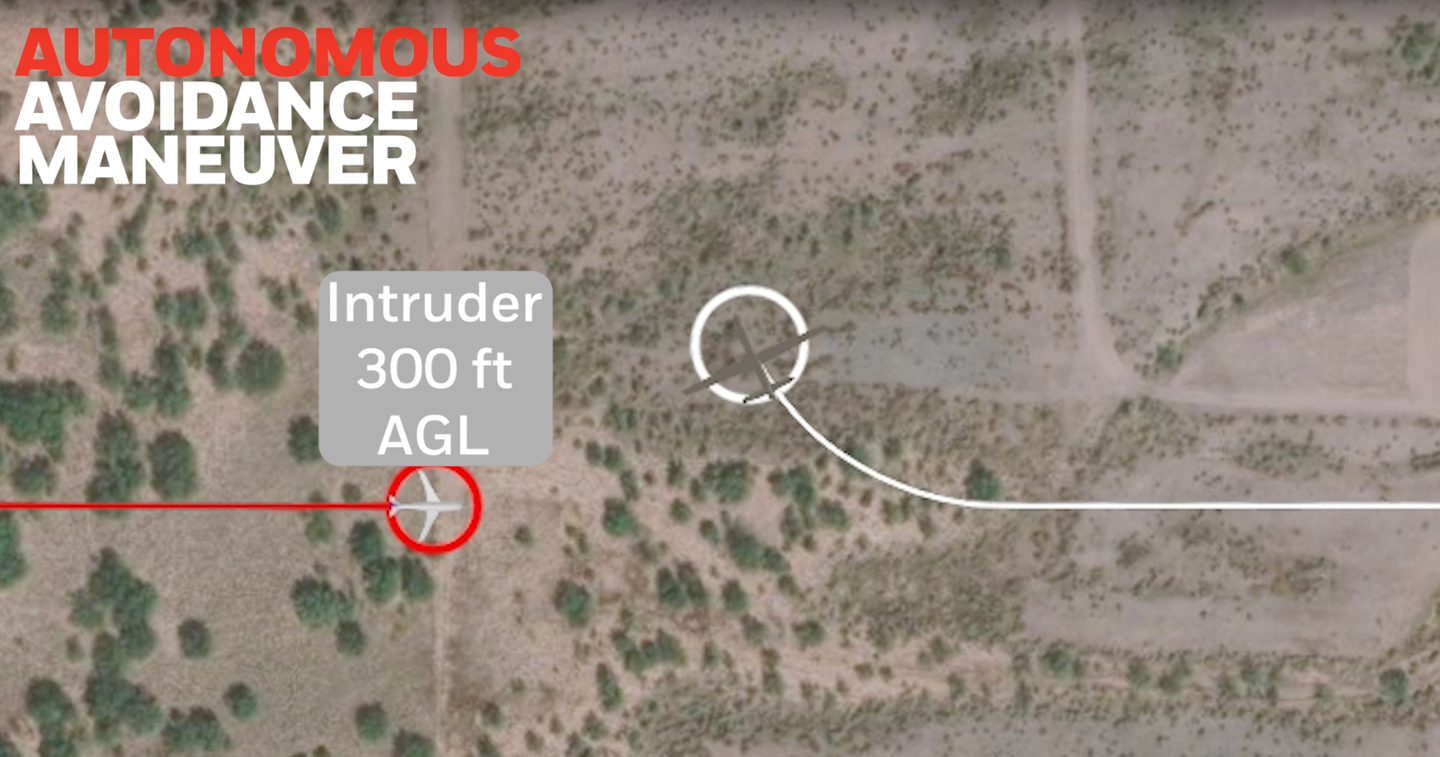Honeywell Successfully Tests Autonomous Detect-and-Avoid System
The “leap forward in safety” could have far-ranging impacts across aviation, including air taxis.

Honeywell said its autonomous radar system kept drones out of danger during the “ultimate game of chicken.” [Courtesy: Honeywell]
After a series of drone test flights described as the “ultimate game of chicken,” Honeywell (NASDAQ: HON) announced success Wednesday with its autonomous detect-and-avoid (DAA) radar system.
The recent tests, located near Phoenix, Arizona, involved a drone piloted by Honeywell’s IntuVue RDR-84K radar system that repeatedly swerved around other UAVs. The system was able to detect airborne traffic and, on its own, decide on a course of action, Honeywell says. Next, the system took over navigation and piloted the drone to safety using its onboard processor.
“We set up the ultimate game of ‘chicken,’ but the RDR-84K simply wouldn’t let these aircraft get into danger,” says Sapan Shah, product manager, advanced air mobility, Honeywell Aerospace, in a statement.
Honeywell says the radar system, which is the size of a paperback book, had previously proven its ability to detect flying objects without transponders while mounted on helicopters and drones. The new tests marked the first time the system performed the avoidance function without human intervention, the company says.
Why It Matters
“This is a leap forward in safety that could have far-ranging impacts across aviation,” Shah says.
More immediately, such technology could improve safety across the growing drone industry, especially as more unmanned aerial vehicles (UAVs) are authorized to fly beyond visual line of sight (BVLOS).
From a long-term perspective, this functionality is key to the future of pilotless aviation, particularly the emerging electric vertical takeoff and landing (eVTOL) air taxi industry.
The RDR-84K would support eVTOL applications, “both to reduce pilot workload as well as support the autonomous operations,” Shah told FLYING.
Although “regulations and requirements around DAA for air taxis are still being developed,” Shah says RDR-84K is built so that it can be scaled to meet the needs of air taxis.”
Honeywell is one of several companies developing autonomous systems that use multiple sensors to detect and track moving obstacles. Engineers are trying to design these systems to quickly analyze data from the sensors and then guide onboard flight control systems to avoid the obstacles. Building machines that can identify potential obstacles under infinite flight scenarios and respond safely will be extremely challenging, to say the least.
Many eVTOL aircraft that are currently undergoing flight test campaigns are flying autonomously, including EHang’s 216 and Wisk Aero’s Cora. Other eVTOL developers who are planning to operate air carrier services intend to launch initially with pilots on board and then transition to autonomous flight years later.
Aircraft developers say autonomous eVTOLs will make the industry more efficient and profitable by making it possible to fly safely while scaling up operations to utilize huge fleets with thousands of aircraft. If this really is the future of eVTOL operations, sophisticated detect-and-avoid technology will need to be perfected, along with new ways of managing air traffic.
Details About the Test Flights
Despite its small size, Honeywell says its radar unit can see targets 3 kilometers away, using a system of overlapping beams—called monopulse technology—to improve accuracy and eliminate ground clutter.
Operating in a desert test area, two quadcopter drones on autopilot flew directly at each other at an altitude of 300 feet agl. One drone, equipped with the RDR-84K, detected the other drone (which did not have a transponder) and evaluated its flight path.
After calculating an avoidance maneuver, the system took over navigation without any input from humans on the ground, “flying left, right, up, down or stopping midair, depending on winds and other factors,” according to Honeywell.
When collision was no longer possible, the radar released control of the drone, and the autopilot guided it back to its original course, Honeywell says.
Next, Honeywell made the tests more challenging. They directed the intruder drone to approach from below, which would allow it to blend into ground clutter. They also directed the intruder to fly at the radar drone from offset angles, which tested the radar’s peripheral vision and high angular detection capabilities.
“The radar handled everything we threw at it,” says Larry Surace, lead systems engineer for the RDR-84K, Honeywell Aerospace. “It saw the danger immediately and successfully executed multiple avoidance maneuvers.”

Subscribe to Our Newsletter
Get the latest FLYING stories delivered directly to your inbox






